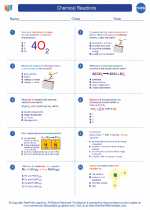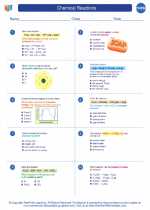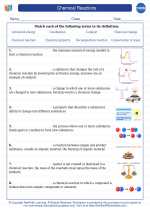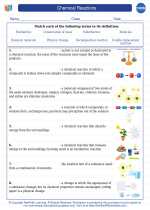Double Replacement Reaction
A double replacement reaction is a chemical reaction where two compounds react and exchange ions to form two new compounds. It is also known as a double displacement reaction or metathesis reaction. The general form of a double replacement reaction can be represented as:
AB + CD → AD + CB
Where A and B are cations and C and D are anions. In this reaction, the cations and anions of the two compounds switch places, resulting in the formation of two new compounds.
Key Characteristics of Double Replacement Reactions:
- Precipitation: Double replacement reactions often involve the formation of a precipitate, which is an insoluble solid that forms from the mixing of two solutions.
- Gas Formation: In some cases, double replacement reactions can result in the formation of a gas.
- Acid-Base Neutralization: Double replacement reactions can also occur between acids and bases, resulting in the formation of water and a salt.
Example:
One classic example of a double replacement reaction is the reaction between silver nitrate (AgNO3) and sodium chloride (NaCl):
AgNO3 + NaCl → AgCl + NaNO3
In this reaction, the silver ion (Ag+) from silver nitrate switches places with the sodium ion (Na+) from sodium chloride, forming silver chloride (AgCl) and sodium nitrate (NaNO3).
Study Guide for Double Replacement Reactions:
When studying double replacement reactions, it is important to remember the following key points:
- Identify the cations and anions in the reactants.
- Use the solubility rules to determine if a precipitate will form.
- Balance the chemical equation for the reaction.
- Study examples of common double replacement reactions to understand the patterns and trends.
- Practice predicting the products of double replacement reactions.
Understanding double replacement reactions is crucial in chemistry, as they are commonly encountered in various chemical processes and reactions.
.◂Chemistry Worksheets and Study Guides High School. Chemical Reactions

 Worksheet/Answer key
Worksheet/Answer key
 Worksheet/Answer key
Worksheet/Answer key
 Worksheet/Answer key
Worksheet/Answer key
 Worksheet/Answer key
Worksheet/Answer key
 Worksheet/Answer key
Worksheet/Answer key
 Vocabulary/Answer key
Vocabulary/Answer key
 Vocabulary/Answer key
Vocabulary/Answer key
 Vocabulary/Answer key
Vocabulary/Answer key
